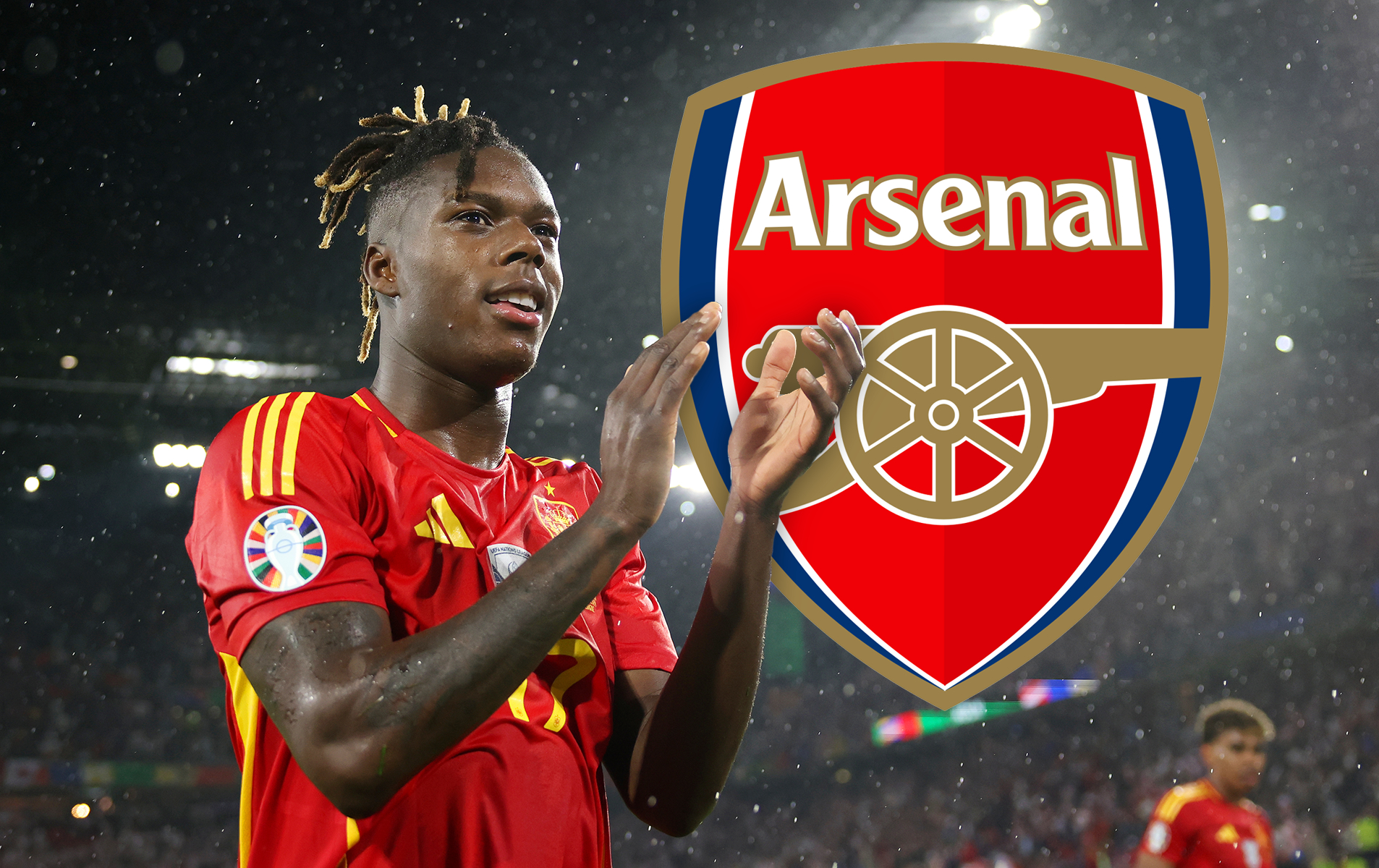Analysed: The impressive evolution of Victor Moses – more than just a working part for Chelsea
The Blues’ Nigerian wideman has struggled to find his place since his first season at Chelsea in 2012/13 – but not now, writes Seb Stafford-Bloor
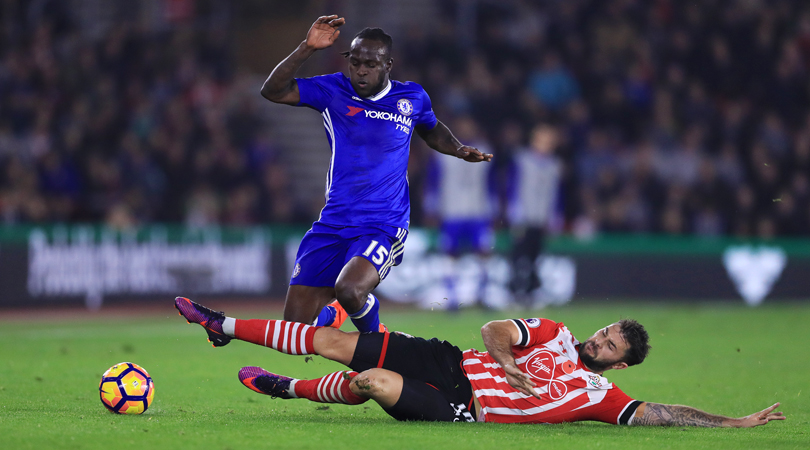
Since the 3-0 defeat to Arsenal on September 24, Chelsea have won three games, scored nine goals and conceded none in the Premier League. It's been quite the turnaround and quite the endorsement for Antonio Conte's much-admired 3-4-3 formation.
While not to nearly as much fanfare, Claude Puel's Southampton have quietly been putting together their own run. Unbeaten in the league since the September 10 loss to Arsenal, they had conceded more than one goal on just two occasions and kept five clean sheets.
It took less than five minutes for Chelsea to put that sequence under threat, as Conte's resurgent team worked the ball from left to right, into the feet of Victor Moses, who in turn fed Eden Hazard. The Belgian winger cut inside Steven Davis, before slamming his low shot beyond Fraser Forster.
It was familiar. The finish, yes, the dancing feet of Hazard too, but also the shape of the move. While offering Chelsea more balance, their new structure has also enabled their attacking midfielders to penetrate deeper and further into the opponent's half. Hazard, in particular, is playing better than last season, but he also more regularly finds himself in positions from which he can influence games; no more static touchline play, no more hoppity-skippity hesitation.
Fit for purpose
Moses certainly got his opportunity by virtue of being right-footed and physically capable of performing the role – but to ignore the layers of his contribution would be reductive
But the more the 3-4-3 is allowed to mature, the more important the deeper players look – in particular the two wing-backs, and more specifically Moses.
The Nigerian has perhaps been done a disservice in recent weeks, in being depicted as a functional component rather than a genuine asset. He "fits the system", we're told, so is worth his place in the side by default. Perhaps there's a kernel of truth to that – Moses certainly got his opportunity by virtue of being right-footed and physically capable of performing the role – but to ignore the layers of his contribution would be reductive.
Get FourFourTwo Newsletter
The best features, fun and footballing quizzes, straight to your inbox every week.
As an example, the Hazard goal at St Mary's owed as much to the timing of his through-ball and ability to attract defenders as it did his literal positioning. His sheer presence on the teamsheet may theoretically make Chelsea more symmetrical, but it's his execution and skill set which helps to make them actually work. On the other side of the pitch, Alonso has had a similar influence but, of the two, Moses is the more dynamic, is useful in more passages of play, and has had the more impressive individual evolution.
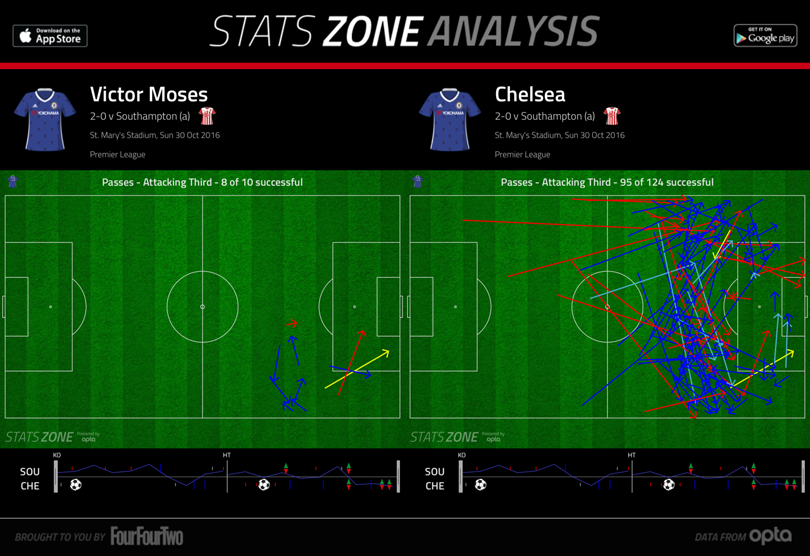
Swiss army knife
It's easy to forget what he has had to learn to occupy his current role. Bought as a pure winger from Wigan Athletic, and deployed as such by Liverpool and West Ham during his loan spells – Chelsea too during fleeting appearances in the past – the 25-year-old has embarked upon quite the learning curve.
The wing-back role demands more than that. It requires a positional discipline and spatial awareness which, to date in his career, Moses has never shown
Perhaps it's his newly acquired traits which now stand out the most. He remains talented on the ball and a problem for isolated defenders, but the wing-back role demands more than that. It requires a positional discipline and spatial awareness which, to date in his career, Moses has never shown. Yet it's those qualities which have won him a place in this side and they were in evidence again at St Mary's.
Southampton's attacking focus appeared to be mainly directed towards Moses's flank. With Pedro playing in the more advanced right-sided role, Puel evidently smelt vulnerability. However, while the hosts probed that area and enjoyed plenty of possession within it, they achieved very little. Pedro must take credit for that, so too Cesar Azpilicueta, but a feature of Chelsea's defensive work was Moses's ability to remove passing angles and position himself in way that forced Southampton backwards and infield.
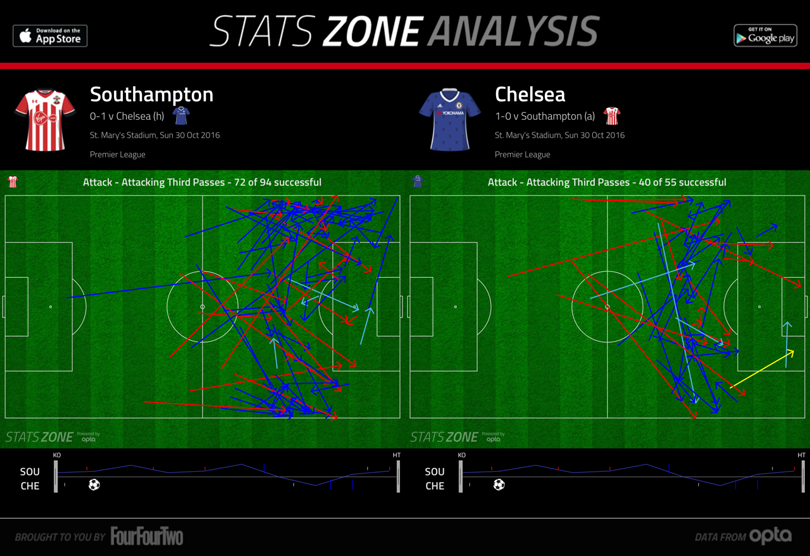
He retrieved possession deep in his own half a few times and made three successful tackles, but it was that intangible influence which was most pertinent. For someone with no natural nous in this role, Moses has become quickly adept at the ushering and hassling aspects of the position. Beyond his more visible actions on Sunday afternoon, he also combined well with supporting team-mates to drain the speed from Southampton's periodic attacks. He didn't commit himself to reckless challenges or exhibit any of the typical naiveties associated with converted wingers.
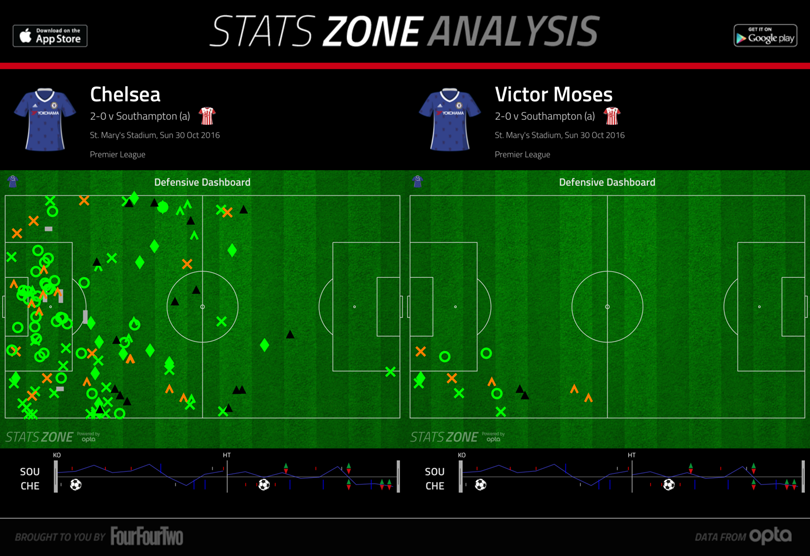
Conte’s way
Providing two-way balance is a wing-back's raison d'etre and that's why Moses was so important in Chelsea's win: he completed his defensive duties admirably, but still managed to be a constant touchline outlet during the attacking phases.
That manufactured the space into which Hazard danced and scored, of course, but also equipped the visitors with a regular option to switch the play and prevented Southampton from congesting the middle of the field. Similarly, he was a convenient outpost for a number of players in several different positions, receiving five passes from Hazard and Azpilicueta, three from Kante and Matic, and a further two from Diego Costa.
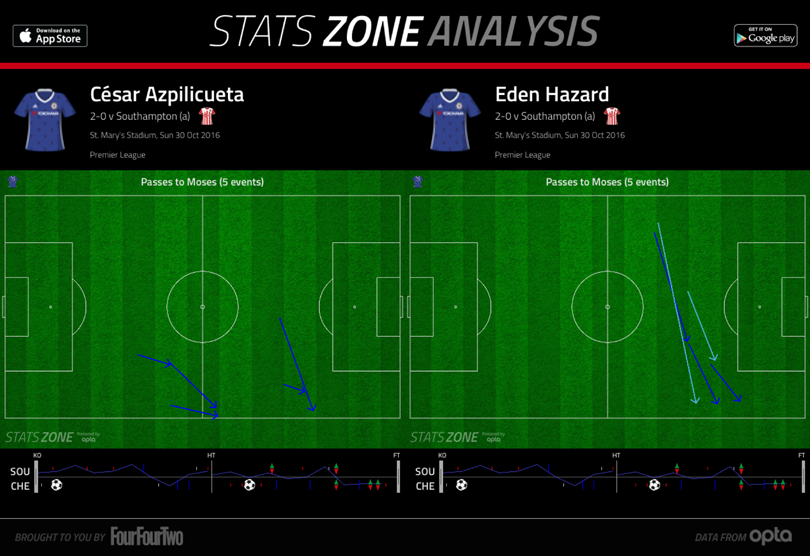
Ultimately, Moses is part of a mechanism. As anticipated, Conte has constructed this Chelsea from interlocking parts to produce something which works smoothly and effectively.
It would be a contradiction, then, to single out any player from this side or to claim one individual's importance as being greater than the others. But if Moses deserves special praise, it's because so much of what his side are currently doing well seems traceable back to him and to what he does with and without the ball.
With the game won, Conte withdrew his repurposed winger for Branislav Ivanovic on 86 minutes. A standing ovation from the travelling support and a big hug from the Italian spoke volumes about what Moses now means to Chelsea. Dismissed countless times over the past few years, he is now an integral part of team who look every inch a contender.
STATS ZONE Free on iOS • Free on Android
Seb Stafford-Bloor is a football writer at Tifo Football and member of the Football Writers' Association. He was formerly a regularly columnist for the FourFourTwo website, covering all aspects of the game, including tactical analysis, reaction pieces, longer-term trends and critiquing the increasingly shady business of football's financial side and authorities' decision-making.
